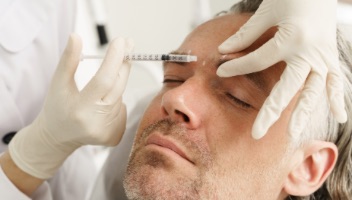Tinea Versicolor
Understanding and Treating Tinea Versicolor
What is Tinea Versicolor?
Tinea versicolor, also known as pityriasis versicolor, is a common fungal infection of the skin. This condition leads to the development of discolored patches, which can be either lighter or darker than the surrounding skin. These patches are often more noticeable after sun exposure.
Expert Treatment at the Center for Surgical Dermatology & Dermatology Associates
The dermatologists at the Center for Surgical Dermatology & Dermatology Associates are skilled in treating Tinea Versicolor. Depending on the severity of the infection, they may prescribe specialized creams, shampoos, or pills to effectively kill the fungus. For more severe cases, stronger medications may be recommended.
Personalized Care and Effective Solutions
Scheduling a skin consultation is the first step in determining the best course of treatment for Tinea Versicolor. Our dermatologists will assess your condition and provide personalized recommendations to ensure the most effective treatment plan. Following your dermatologist's advice is crucial for achieving the best results and accomplishing your healthy skin goals.
Examples of Tinea Versicolor




What are the Symptoms of Tinea Versicolor?
- Patches may be pink, tan, or brown.
- Can merge to form larger areas.
- Tinea versicolor is more noticeable after sun exposure because the fungus inhibits the normal tanning response.
What Causes Tinea Versicolor?
- Tinea versicolor is caused by an overgrowth of the yeast-like fungus (Malassezia) on the skin.
- The fungus disrupts normal pigmentation, leading to the development of discolored patches on the skin.
- Factors like heat, humidity, and oily skin can contribute to the overgrowth of Malassezia.
Tips on How to Prevent Tinea Versicolor
Tips for preventing tinea versicolor that you can try while you wait to see a dermatologist include:
- Avoid excessive heat and humidity whenever possible.
- Keep sun exposure to a minimum, and avoid other elements that can darken your skin such as tanning beds, as this can enhance discoloration.
- Wear clothing that is loose, breathable, or made of wicking materials.
- Avoid skin products that are oily, ideally choosing oil-free or non-comedogenic options.
- Use anti-fungal shampoos and creams. When using creams, apply to clean and dry skin according to package instructions.
Tinea Versicolor FAQs
Dermatologists often diagnose Tinea Versicolor by examining the affected skin and may use a Wood's lamp for better visibility. If you notice persistent discoloration or changes in your skin, consult a dermatologist.
Recurrence is possible, especially in warm and humid environments. Dermatologists may recommend antifungal shampoos or other preventive measures to minimize the risk of recurrence.
Yes, Tinea Versicolor can affect facial skin. Dermatologists may recommend specialized treatments for the face, such as antifungal creams or washes designed for sensitive areas.
Sun exposure can worsen Tinea Versicolor. Dermatologists often advise avoiding prolonged sun exposure and may recommend specific sunscreens or protective measures to prevent exacerbation.
Treatment Options for Tinea Versicolor
If tinea versicolor is diagnosed, dermatologists may prescribe oral antifungal medications. It's essential to follow the prescribed treatment regimen consistently to ensure effective resolution of the infection. To create your personalized tinea versicolor maintenance plan, schedule a consultation with Pinnacle Dermatology.
Related Blog Posts

- General Dermatology
- Skin Care
- Chronic Skin Conditions
Hormonal acne can be a pesky skin problem for many. The only way to address this is by finding a hormonal acne treatment that works for you and your unique skin.
Read More
- Botox
- Injectables or Fillers
- Cosmetic Treatments
We get plenty of questions every day about the differences between BOTOX® and Dysport®, so we wanted to educate you – and set the record straight!
Read More
- Skin Care
- Cosmetic Treatments
Unlock the secrets to achieving radiant, glowing skin. Explore expert tips and skincare routines tailored to nourish and revitalize your complexion, empowering you to embrace a luminous and youthful appearance.
Read MoreFeatured Products
Check your local office for current stock!
Check your local office for current stock!
